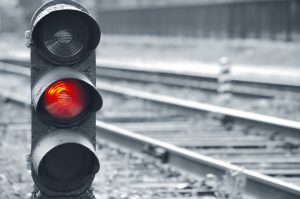Welcome to our blog series looking at the causes and consequences of well known disasters. This blog looks at Harrow and Wealdstone Rail Crash 1952.
The Incident
The Harrow and Wealdstone Rail Crash occurred on 8th October 1952 at Harrow and Wealdstone Station in Middlesex. Three trains collided in the early morning rush hour, resulting in the loss of 112 people with 340 injured and 88 needing to be detained in hospital.
A local train carrying approximately 800 passengers was running seven minutes late due to fog. The Perth Express hit the local train from the rear at a speed of 50-60 mph, having passed a coloured light signal and two semaphore signals set to danger, bursting through trailing points of the cross over from the slow lines set for the local train. The local train was driven forward 20 yards and the three rear coaches were telescoped, destroying them. The first two vans and three coaches of the Perth train piled up behind and above the local train.
The wreckage from the first collision spread across the adjacent line and a few seconds after the first collision, the northbound express to Liverpool, travelling at about 60 mph, struck the derailed Perth train resulting in the first two carriages of the Liverpool train mounting the platform.
The Causes
An enquiry found that the driver of the train from Perth had passed a caution signal and two danger signals before colliding with the stationary train.
As the driver and fireman were both killed in the accident it was never established why this happened.
The Lessons
As far back as this accident, we are aware of the need for warning drivers that they had passed a signal at caution or danger. It propels the need for an automatic warning system, but this was to be a five year plan. But it was going to be many years and more accidents and deaths before it was taken seriously.
It was after the Ladbroke Grove 1999 collision that the H.M Railway Inspectorate published their assessment report multi-SPAD signals, (signal passed at danger).
While automatic safety systems can greatly reduce risks, rail and other industries such as construction and manufacturing must also build a safety culture where everyone plays their part.
Our Health & Safety Consultants help businesses reduce occupational health & safety risks and comply with legislation. Contact us for more information.


